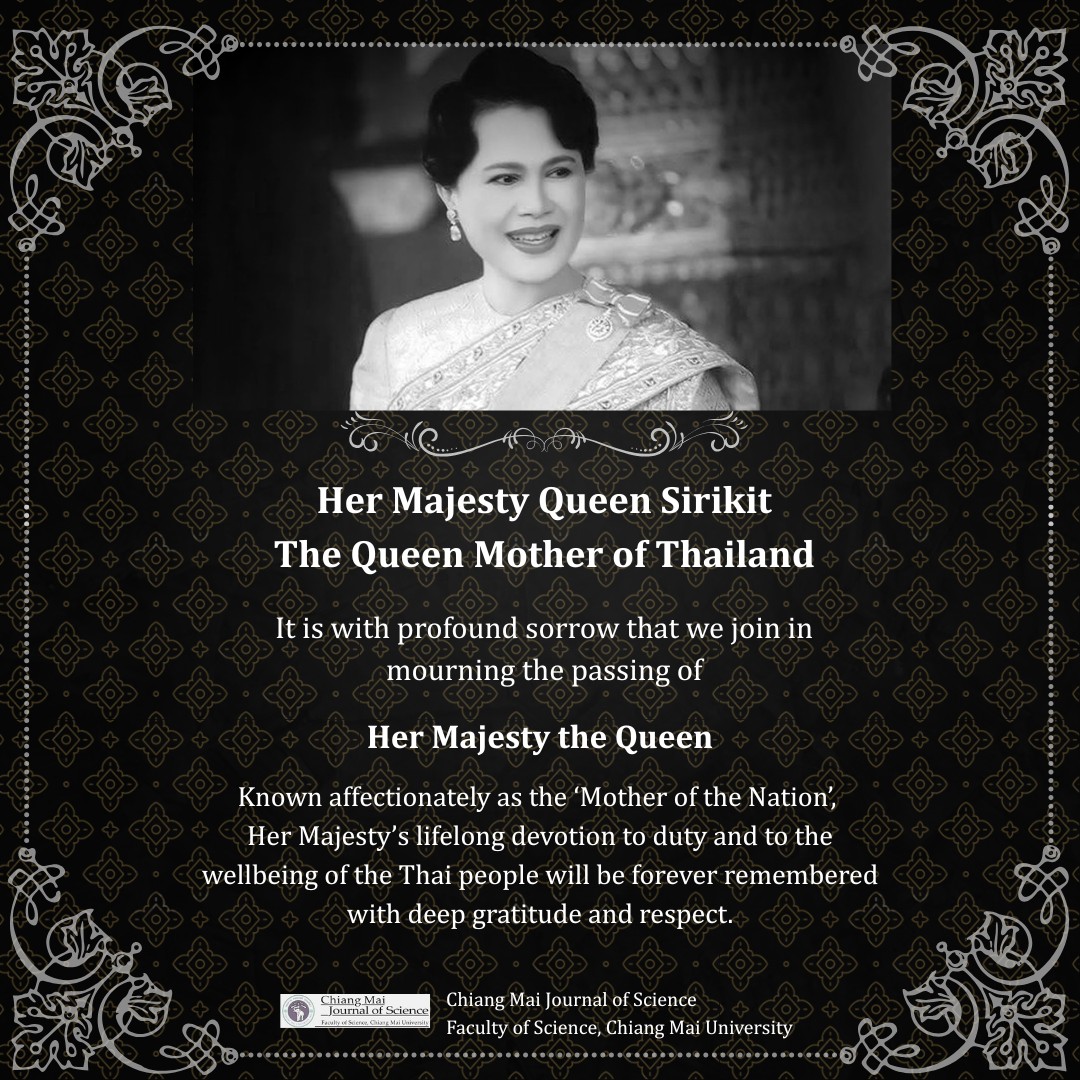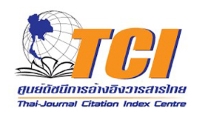JOURNAL DETAIL
Characteristics of Microstructure, Microhardness, and Oxidation of FSW and MIG Welded Steels
Paper Type |
Contributed Paper |
Title |
Characteristics of Microstructure, Microhardness, and Oxidation of FSW and MIG Welded Steels |
Author |
Seul Ki Kim, Seung Boo Jung and Dong Bok Lee* |
Email |
dlee@skku.ac.kr |
|
Abstract: The SUS 409L stainless steel plates were joined by FSW and MIG welding techniques. The welding electrode used for MIG welding was SUS 430 stainless steel. In the case of the MIG welding, the hardness was the highest in the weld metal, decreased in HAZ, and rose slightly in the base metal. The weld metal had the highest hardness owing to the large residual stress, and its refined microstructure. The weld metal had better oxidation resistance than the HAZ and base metal because of its high Cr content compared with the HAZ and base metal. In the case of the FSW, the microstructure consisted of the stir zone, thermo-mechanically affected zone (TMAZ), and base metal. The stir zone had a relatively high hardness, owing to intense plastic deformation and dynamic recrystallization. It had better oxidation resistance than the base metal. |
|
Start & End Page |
831 - 838 |
Received Date |
|
Revised Date |
|
Accepted Date |
|
Full Text |
Download |
Keyword |
steel, oxidation, microstructure, oxidation, FSW, MIG welding |
Volume |
Vol.40 No.5 SPECIAL ISSUE 1 |
DOI |
|
Citation |
Kim S.K., Jung S.B. and Lee* D.B., Characteristics of Microstructure, Microhardness, and Oxidation of FSW and MIG Welded Steels, Chiang Mai Journal of Science, 2013; 40(5): 831-838. |
| View:833 Download:278 | |
RELATED ARTICLE
Article ID: e2025022
Author:Mingjia Yu, Jiannan Liu, Xiaobo Wang, Ming Qi and Minfu Wu
Vol.52 No.2 (March 2025) View: 607 Download:286
Article ID: e2024089
Author:Arnon Chaipanich, Nalintip Sansuthum, Phakin Chomyen, Kornnika Wianglor and Supakporn Aodkeng
Vol.51 No.6 (November 2024) View: 1,374 Download:312
Article ID: e2024045
Author:Minh-Tan Ha, Pham Mai Khanh and Nguyen Hong Hai
Vol.51 No.3 (May 2024) View: 834 Download:656
Article ID: e2024021
Author:Khettawan Preecha, Sasirat Chaideesungnoen and Prapas Muangjunburee
Vol.51 No.2 (March 2024) View: 1,623 Download:644
Article ID: e2024003
Author:Jeyakrishnan Sundararaj, Movva Naga Swapna Sri, Anusha Peyyala and Vijayakumar Sivasundar
Vol.51 No.1 (January 2024) View: 1,431 Download:2,078
Article ID: e2023060
Author:Arif Tjahjono, Nadya Salsabila Frendyta and Permana Andi Paristiawan
Vol.50 No.6 (November 2023) View: 998 Download:521
Article ID: e2023036
Author:Prapas Muangjunburee, Nutchanon Poolsiri, Sasirat Chaideesungnoen, Ammarat Naultem, Hein Zaw Oo and Manwika Kongpuang
Vol.50 No.4 (July 2023) View: 1,209 Download:599
page: 1217 - 1232
Author:Arivumani Ravanan, Ilamathi Palanivel and Balamurugan Kulendran
Vol.49 No.4 (July 2022) View: 1,641 Download:844
page: 217 - 222
Author:Piriyakorn Piriyakulkit and Siripon Anantawaraskul
Vol.49 No.1 (Special Issue I : Jan 2022) View: 1,432 Download:482
page: 166 - 175
Author:Sukrit Songkuea, Nicolas Montroussier†, Phanuphak Seensattayawong and Anchalee Manonukul
Vol.49 No.1 (Special Issue I : Jan 2022) View: 1,514 Download:387
page: 155 - 165
Author:Phanuphak Seensattayawong, Pierre Métais-Lagouarde†, Sukrit Songkuea and Anchalee Manonukul
Vol.49 No.1 (Special Issue I : Jan 2022) View: 1,686 Download:568
page: 1111 - 1128
Author:Piyaphat Kimthong, Paiboon Wattanapornphan, Kirati Waree, Vitoon Uthaisangsuk and Chakkrist Phongphisutthinan
Vol.48 No.4 (July 2021) View: 922 Download:154
page: 631 - 647
Author:Nuwan Wannaprawat and Karuna Tuchinda
Vol.48 No.2 (March 2021) View: 1,005 Download:512
page: 611 - 630
Author:Anwar Iqbal*, Kok-Hou Tan, Farook Adam, Noor Hana Hanif Abu Bakar, Mohammad Norazmi Ahmad and Muhammad Rahimi Yusop*
Vol.48 No.2 (March 2021) View: 1,475 Download:653
page: 207 - 220
Author:Zhongbiao Zhai, Yingchun Miao*, Shanshan Yang, Yachong Yang, Jing Chen, Gang Xie and Shixiong Wang
Vol.48 No.1 (January 2021) View: 972 Download:349
page: 176 - 184
Author:Xue-Fei Zhou*
Vol.48 No.1 (January 2021) View: 929 Download:508
page: 1230 - 1240
Author:Xue-Fei Zhou
Vol.47 No.6 (November 2020) View: 817 Download:255
page: 673 - 685
Author:Pat Sooksaen* and Pathompong Puathawee
Vol.47 No.4 (Special Issue II : July 2020) View: 993 Download:1,077
page: 349 - 361
Author:Kessaraporn Wathanyu, Karuna Tuchinda, Sithipong Mahathanabodee and Surasak Surinpong
Vol.47 No.2 (Special Issue I : March 2020) View: 1,361 Download:635
page: 329 - 342
Author:Suphitcha Moonngam, Pranpreeya Wangjina, Ekkarut Viyanit, Namurata Sathirachinda Palsson and Chaiyasit Banjongprasert
Vol.47 No.2 (Special Issue I : March 2020) View: 953 Download:726
page: 319 - 328
Author:Payoon Senthongkaew, Laksamee Angkurarach and Patiphan Juijerm*
Vol.47 No.2 (Special Issue I : March 2020) View: 893 Download:509
page: 312 - 318
Author:Laksamee Angkurarach and Patiphan Juijerm*
Vol.47 No.2 (Special Issue I : March 2020) View: 941 Download:1,084
page: 304 - 311
Author:Sai-yan Primee and Patiphan Juijerm
Vol.47 No.2 (Special Issue I : March 2020) View: 1,035 Download:583
page: 278 - 287
Author:Wichet Lamai and Akkarat Wongkaew*
Vol.47 No.2 (Special Issue I : March 2020) View: 1,726 Download:869
page: 229 - 241
Author:Pitichon Klomjit*, Namurata Palsson, Piya Khamsuk and Ekkarut Viyanit
Vol.47 No.2 (Special Issue I : March 2020) View: 1,148 Download:2,582
page: 255 - 259
Author:Niwooti Whangchai*, Nakao Nomura and Masatoshi Matsumura
Vol.30 No.3 (DECEMBER 2003) View: 792 Download:244
page: 17 - 25
Author:Sirisak Seansukato and Torranin Chairuangsri*
Vol.31 No.1 (JANUARY 2004) View: 839 Download:273
page: 196 - 206
Author:Phisurang Konjanda, Toshiharu Yakushi, Kazunobu Matsushita and Gunjana Theeragool
Vol.46 No.2 (March 2019) View: 958 Download:330
page: 46 - 61
Author:Putkrong Phanumong, Sang Moo Kim, Jurmkwan Sangsuwan, Noppol Leksawasdi and Nithiya Rattanapanone
Vol.46 No.1 (January 2019) View: 899 Download:400
page: 2730 - 2739
Author:Shumaila Kiran, Sofia Nosheen, Sarosh Iqbal, Shazia Abrar, Fatima Jalal, Tahsin Gulzar, Ammara Mukhtar, Shumaila Maqsood, Waqas Ahmad and Nabigha Naseer
Vol.45 NO.7 (November 2018) View: 873 Download:306
page: 2481 - 2490
Author:Suwapitcha Buntham, Paitoon Boonsong, Panupong Jaiban, Nittaya Keawprak and Anucha Watcharapasorn
Vol.45 No.6 (September 2018) View: 880 Download:339
page: 2338 - 2347
Author:Wararut Bunchareon, Supaporn Pamok, Supap Saenphet and Kanokporn Saenphet
Vol.45 No.6 (September 2018) View: 990 Download:434
page: 2034 - 2047
Author:Buntoeng Srikarun and Prapas Muangjunburee*
Vol.45 No.5 (Special 2018) View: 938 Download:518
page: 1901 - 1908
Author:Mohsin Siddique, Mohammad Ilyas and Muhammad Saeed
Vol.45 No.4 (July 2018) View: 963 Download:268
page: 1247 - 1256
Author:Jakkapong Thongpitak, Jeeraporn Pekkoh and Chayakorn Pumas*
Vol.45 No.3 (May 2018) View: 1,071 Download:312
page: 1099 - 1110
Author:Pat Sooksaen* and Pathompong Puathawee
Vol.45 No.2 (March 2018) View: 960 Download:313
page: 1087 - 1098
Author:Shabnum Bashir, Mohammad Mustafa, Syed Wasim Safvi, Nisar Ahmad Farhad and Masood Ahmad Rizvi*
Vol.45 No.2 (March 2018) View: 873 Download:500
page: 1030 - 1038
Author:Jessa Marie Millanar, Mark Daniel de Luna, Aummara Yodsa-nga and Kitirote Wantala*
Vol.45 No.2 (March 2018) View: 959 Download:215
page: 961 - 972
Author:Tu Phuong Pham Le and Wanwipa Siriwatwechakul*
Vol.45 No.2 (March 2018) View: 902 Download:355
page: 949 - 960
Author:Yot Boontongkong, Jaruwan Yaemsiri and Pawadee Methacanon*
Vol.45 No.2 (March 2018) View: 932 Download:419
page: 868 - 880
Author:Yongyuth Theapparat*, Chanita Ponglimanont, Ausa Chandumpai and Nikhom Laemsak
Vol.45 No.2 (March 2018) View: 860 Download:351
page: 846 - 857
Author:Thavatchai Kamoltham, Jiradej Manosroi, Charinya Chankhampan, Worapaka Manosroi and Aranya Manosroi*
Vol.45 No.2 (March 2018) View: 1,127 Download:680
page: 1591 - 1600
Author:Jutamas Kantee and Somjai Kajorncheappunngam*
Vol.44 No.4 (October 2017) View: 887 Download:362
page: 904 - 911
Author:Syed Mubashar Sabir*, Rashad Hussain Shah and Asad Hussain Shah
Vol.44 No.3 (July 2017) View: 947 Download:481
page: 678 - 687
Author:A. Hossienzadeh Colagar* [a,b], O. Alavi [a], F. Sohbatzadeh [b, c]
Vol.44 No.2 (April 2017) View: 883 Download:242
page: 825 - 833
Author:Jitrayut Jitonnom [a] and Christoph Sontag *[a]
Vol.43 No.4 (JULY 2016) View: 879 Download:503
page: 600 - 609
Author:Pitak Wongthep [a], Paralee Waenkaew [a, b], Thapanee Sarakonsri [a, b], Somchai Lapanantnoppakhun [a, c] and Surin Saipanya*[a, b]
Vol.43 No.3 (APRIL 2016) View: 807 Download:471
page: 365 - 374
Author:Zbigniew Grzesik
Vol.43 No.2 (SPECIAL ISSUE 1) View: 847 Download:257
page: 358 - 364
Author:Wananurat Srijampan [a], Monnapas Morakotjinda [b], Rungtip Krataitong [b], Thanyaporn Yotkaew [b], Nattaya Tosangthum [b], Amporn Wiengmoon [a] and Ruangdaj Tongsri *[b]
Vol.43 No.2 (SPECIAL ISSUE 1) View: 854 Download:393
page: 351 - 357
Author:Chen Hongmei* [a], Liu Zhongming [a], Zang Qianhao [a, b], Yu Xin [a], Zhang Jing [c] and Jin Yunxue [a]
Vol.43 No.2 (SPECIAL ISSUE 1) View: 871 Download:269
page: 80 - 88
Author:Arvind Kumar Goyal [a,b], Sushil Kumar Middha [c], Talambedu Usha [c] and Arnab Sen*[a]
Vol.43 No.1 (JANUARY 2016) View: 917 Download:226
page: 169 - 175
Author:Li Fang *[a], Surin Saipanya *[b,c], Xuemei Luo [a], Xiaoping Huang [a] and Feifei Li [a]
Vol.43 No.1 (JANUARY 2016) View: 854 Download:349
page: 206 - 214
Author:Siriwan Sakultanchareonchai [a], Torranin Chairuangsri [b] and Ekasit Nisaratanaporn*[a]
Vol.43 No.1 (JANUARY 2016) View: 905 Download:435
page: 481 - 489
Author:Kontee Thongthai, Laongnuan Srisombat, Surin Saipanya and Supon Ananta
Vol.42 No.2 (APRIL 2015) View: 834 Download:270
page: 923 - 937
Author:Zbigniew Brytan* and Jerzy Niagaj
Vol.40 No.5 SPECIAL ISSUE 1 View: 801 Download:269
page: 874 - 885
Author:Zbigniew Brytan* and Jerzy Niagaj
Vol.40 No.5 SPECIAL ISSUE 1 View: 859 Download:252
page: 849 - 856
Author:Miroslaw Bonek
Vol.40 No.5 SPECIAL ISSUE 1 View: 769 Download:235
page: 34 - 48
Author:Hip Seng Yim*[a, b], Fook Yee Chye [b], Mei Lian Liow [a], and Chun Wai Ho [a]
Vol.40 No.1 (JANUARY 2013) View: 962 Download:345
page: 669 - 677
Author:Bongkot Phichaikamjornwut, Henrik Skogby, Prayote Ounchanum, Phisit Limtrakun and Apichet Boonsoong
Vol.39 No.4 (OCTOBER 2012) View: 793 Download:301
page: 429 - 444
Author:Teerayut Theantana [a,b], Duangta Kanjanapothi [c], Saisamorn Lumyong* [b]
Vol.39 No.3 (JULY 2012) View: 920 Download:270
page: 254 - 262
Author:Chatdanai Boonruang*a, Wareelak Kumpangkeawa, Kittichai Sopunnab, Natthaphol Chomsaengc, Suparut Nar
Vol.39 No.2 (APRIL 2012) View: 940 Download:250
page: 30 - 40
Author:Supunsa Dech-oup, Sirinee Thaiwatthana and Torranin Chairaungsri
Vol.39 No.1 (JANUARY 2012) View: 840 Download:293
page: 560 - 571
Author:Asmita Dutta and Mukesh Singh
Vol.38 No.4 (OCTOBER 2011) View: 907 Download:390
page: 187 - 192
Author:Chawalit Bhoomanee, Niyom Hongsith, Ekasiddh Wongrat, Supab Choopun, and Duangmanee Wongratanaphisa
Vol.38 No.2 (APRIL 2011) View: 806 Download:331
page: 39 - 46
Author:Kiattipoom Kongjai, Supab Choopun, Niyom Hongsith, Atcharawon Gardchareon
Vol.38 No.1 (JANUARY 2011) View: 849 Download:244
page: 47 - 55
Author:Surasak Kuimalee*[a], John T.H. Pearce [b] and Torranin Chairuangsri**[c]
Vol.38 No.1 (JANUARY 2011) View: 841 Download:251
page: 293 - 300
Author:Ornmanee Coovattanachai*, Prayoon Lasutta, Nattaya Tosangthum, Rungtip Krataitong, Monnapas Morakot
Vol.33 No.3 (SEPTEMBER 2006) View: 856 Download:361
page: 175 - 182
Author:Sukanda Jiansirisomboon*, Anucha Watcharapasorn and Tawee Tunkasiri
Vol.33 No.2 (MAY 2006) View: 903 Download:222
page: 169 - 173
Author:Anucha Watcharapasorn*, Sukanda Jiansirisomboon and Tawee Tunkasiri
Vol.33 No.2 (MAY 2006) View: 873 Download:219
page: 196 - 198
Author:Teerapong Harnwirojkul, Mana Polboon, John Pearce and Thanaporn Korad
Vol.35 No.1 (JANUARY 2008) View: 813 Download:323
page: 156 - 162
Author:Akkarat Wongkaew
Vol.35 No.1 (JANUARY 2008) View: 854 Download:420
page: 63 - 68
Author:Thirachitra Tapalad, Arthit Neramittagapong, Sutasinee Neramittagapong and Mallika Boonmee
Vol.35 No.1 (JANUARY 2008) View: 3,585 Download:458
page: 53 - 66
Author:Nattaya T osangthum*, Ornmanee Coovattanachai, R ungtip Krataitong, Monnapas Morak otjinda, Anan Da
Vol.33 No.1 (JANUARY 2006) View: 852 Download:268
page: 45 - 52
Author:Nattaya T osangthum*, Ornmanee Coovattanachai, R ungtip Krataitong, Monnapas Morak otjinda,
Vol.33 No.1 (JANUARY 2006) View: 873 Download:394
page: 521 - 527
Author:Naing Naing Aung* and Y ong- Jun T an
Vol.32 No.3 (SEPTEMBER 2005) View: 828 Download:251
page: 331 - 339
Author:Patama Visuttipitukul, Nantiya Limvanutpong, Niti Yongvanich, Prasonk Srichroenchai and Panyawat Wan
Vol.36 No.3 (SEPTEMBER 2009) View: 807 Download:313
page: 23 - 30
Author:Ornmanee Coovattanachai* [a], Bhanu Vetayanugul [a], Rungtip Krataitong [a], Prayoon Lasutta [a],
Vol.32 No.1 (JANUARY 2005) View: 903 Download:247
page: 296 - 301
Author:Seksak Asavavisithchai, Ekasit Nisaratanaporn, and Yuttanant Boonyongmaneerat
Vol.36 No.3 (SEPTEMBER 2009) View: 892 Download:225
page: 31 - 38
Author:Torranin Chairuangsri [a], Rik M. D. Brydson [b], David V. Edmonds [b]
Vol.28 No.1 (JUNE 2001) View: 980 Download:358
page: 260 - 268
Author:Torranin Chairuangsri, and Ekasit Nisaratanaporn
Vol.37 No.2 (MAY 2010) View: 936 Download:280
Copyrights © Since 2021 All Rights Reserved by Chiang Mai Journal of Science










